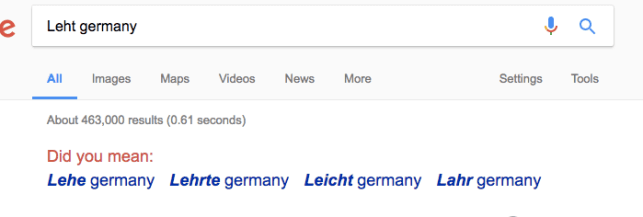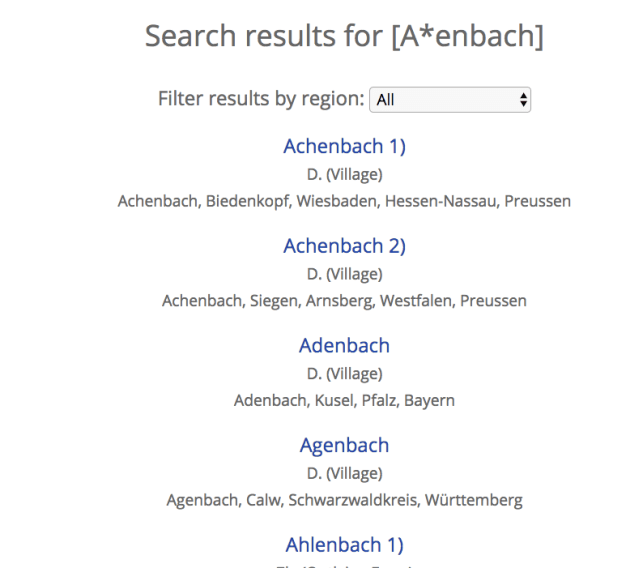Deciphering Place Names Just Got Easier
Thanks to guest blogger Katherine Schober, expert German translator and author of the new book, Tips and Tricks of Deciphering German Handwriting, for this article on deciphering place names (or anything else) in hard-to-read old documents.
There are times when you know from the context of an old document that a certain handwritten word is a city or town–but you aren’t sure of the exact letters the scribe has written. Perhaps you can make out most of the name, but not the first letter. Or maybe you can’t tell whether you’re looking at an “r” or an “n” in the middle of the word. Other times, you can read the place name, but this particular spelling doesn’t appear on a map.
Deciphering place names with a simple trick—and 2 free online tools
Two online resources that are very helpful for identifying town names are Google’s search engine and Meyer’s Gazetteer. At both sites, you can enter what you do know and have these sites help suggest possible place names.
Google search suggestions
Type your transcribed town name into Google—along with any other known place clues, such as the county/province or country name–and see if you get any search results for the region you are researching. If you do, congratulations, you likely transcribed it correctly!
If not, Google may actually suggest the correct transcription of your word for you. For example, when I was translating a nineteenth-century document a few months ago, I read the letters of the town as “L-e-h-t”. I typed “Leht, Germany” into Google, and waited to see what search results would appear. As it turned out, there were no search results for “Leht, Germany,” but Google’s “Did you mean…” function actually provided four other possibilities for what I could have meant as a town name! Here’s what it gave me:
(Learn hundreds more tips on using Google search–and all the other free Google tools–in Lisa Louise Cooke’s popular book, The Genealogist’s Google Toolbox.)
More help from Meyer’s Gazetteer
If you can only recognize the first few or the final few letters of a German town, Meyer’s Gazetteer is the site for you. Meyer’s Gazetteer is a free database containing names and information on pre-World War I German cities, towns, and villages (meaning that this site includes towns in present-day France, Poland, and other places). Type in the letters you recognize in your word and use an asterisk to represent the letters you don’t. Meyer’s Gazetteer will then provide you with a list of all places with your letter combination. Then you can then see if there is a town that matches your handwritten word and region.
In the example below, I recognized a capital “A” at the beginning of the word. The middle letters looked like a scribble, but I could see “e-n-b-a-c-h” as the final letters of the word. I typed this into Meyer’s Gazetteer, using an asterisk for those unclear middle letters. The website then provided me with a list of possibilities, and–by only looking at the town names in my specific German region–I was able to significantly narrow down what my handwritten town name could be. By comparing this list to my handwritten word, I was able to then decipher the remaining letters and figure out the name of the town. (Click here for more tips on using Meyer’s Gazetteer.)
By taking advantage of the resources available online, you can make your transcription process much easier and much more fun. Best of luck!
About the Author
Katherine Schober is a German translator who specializes in genealogy documents. Her new book, Tips and Tricks of Deciphering German Handwriting, is available in paperback or Kindle format. She also has a terrific German Handwriting Course here.
Check out Katherine’s other Genealogy Gems guest blog posts:








